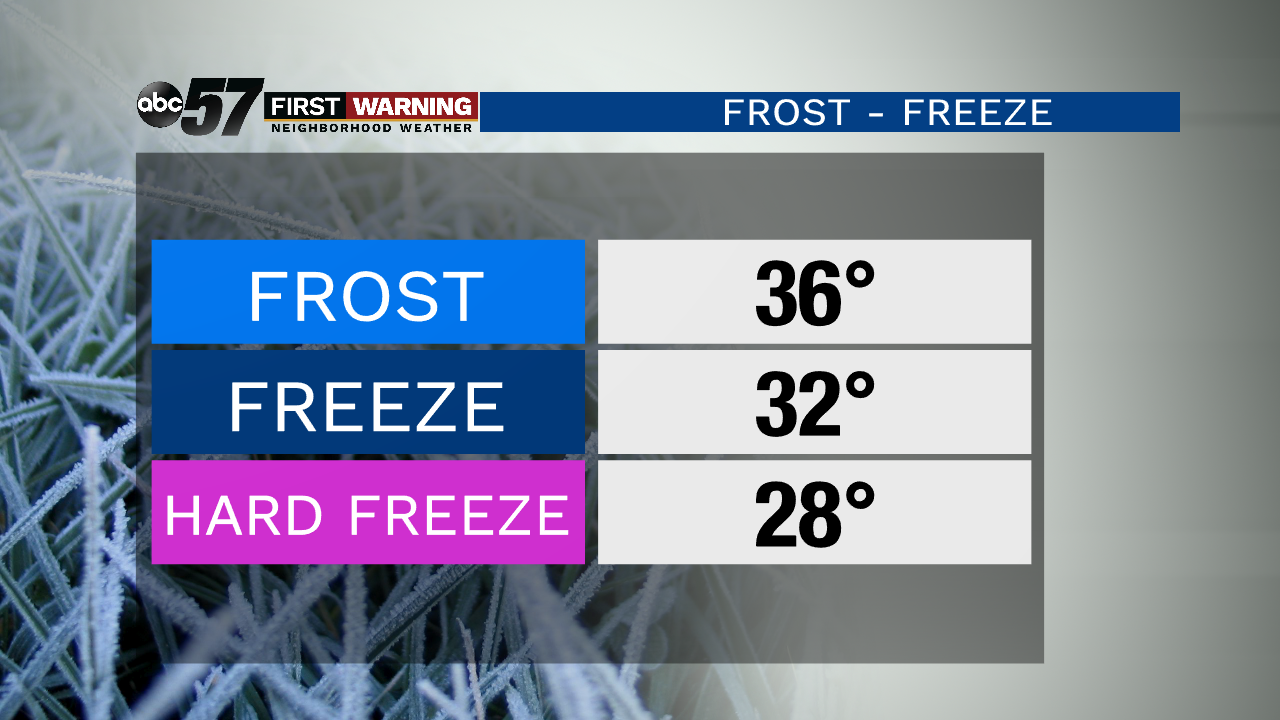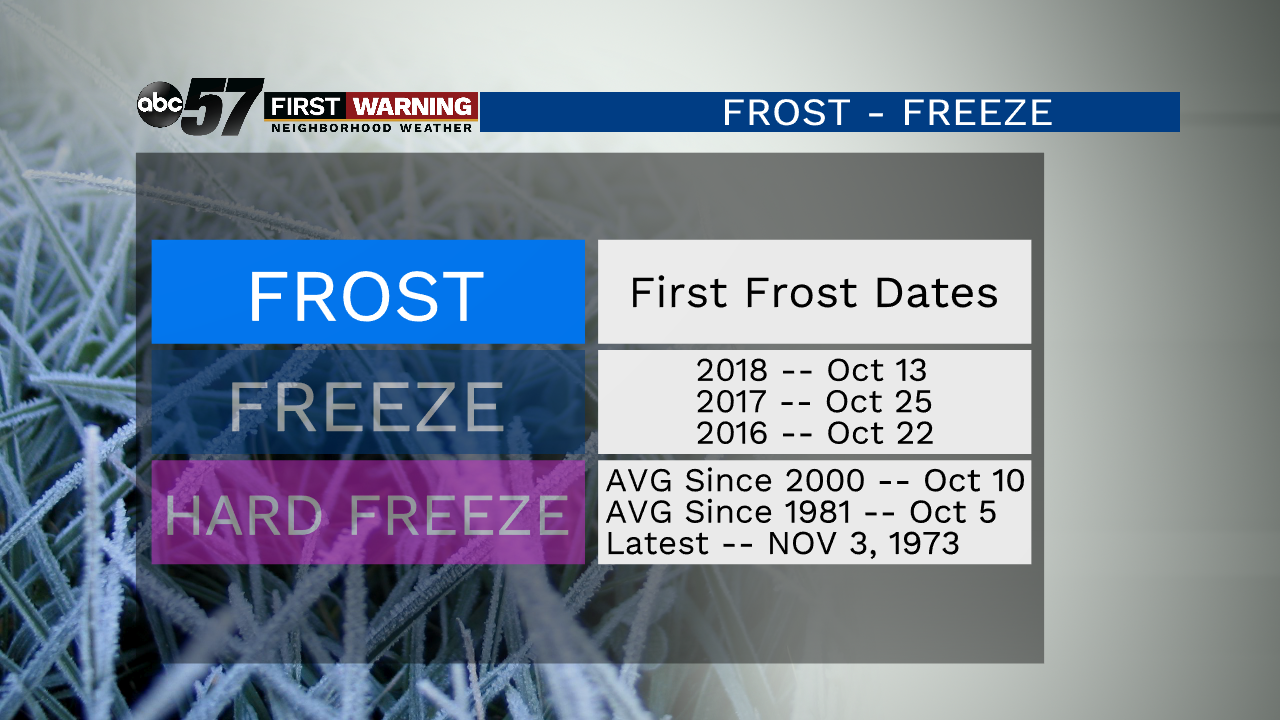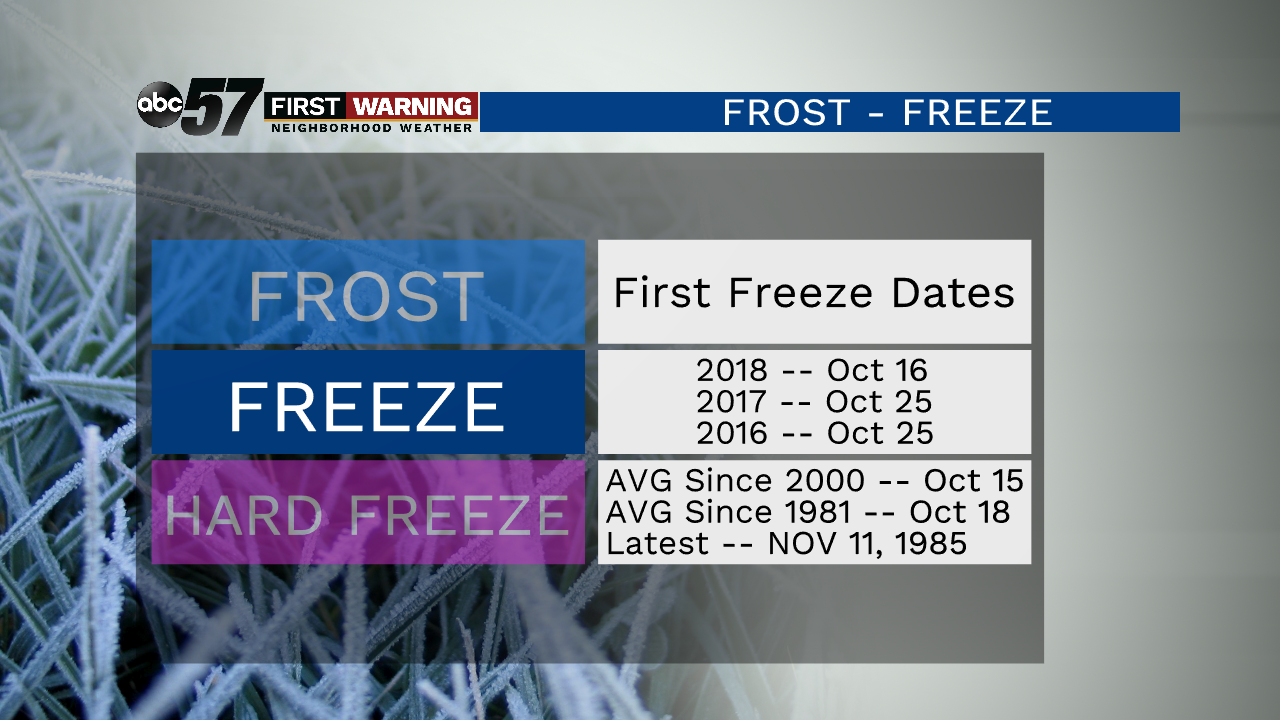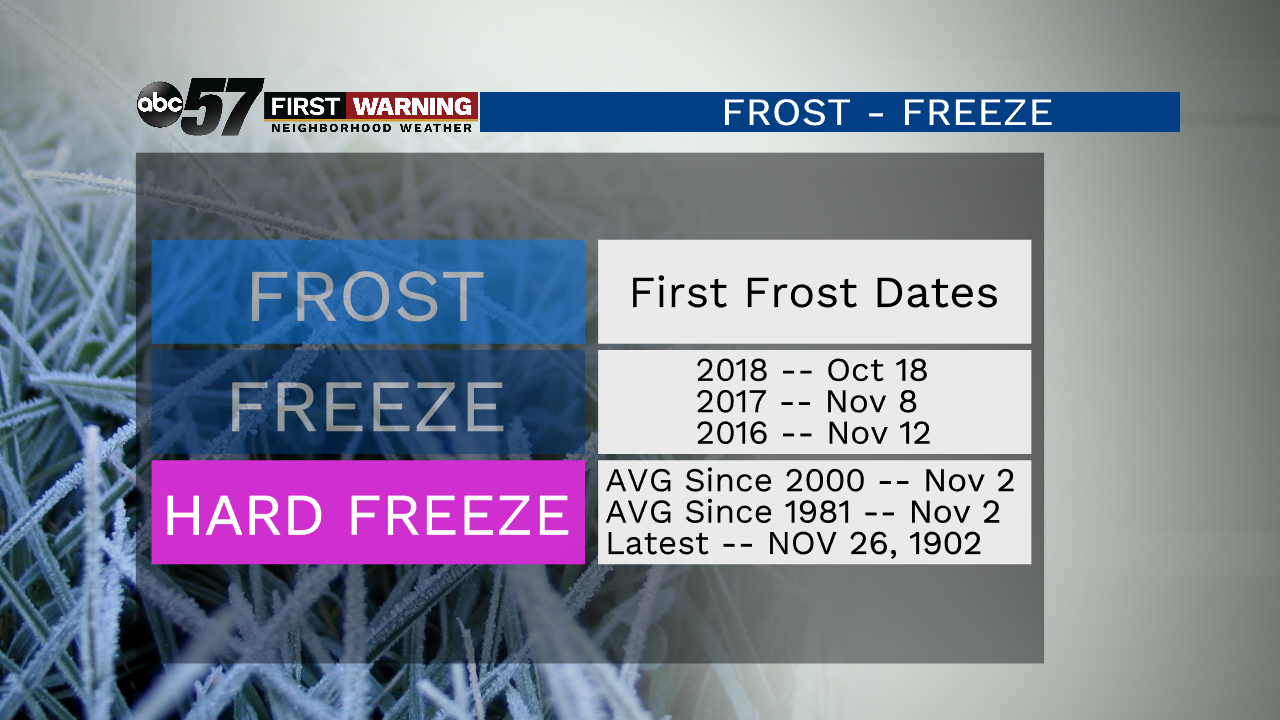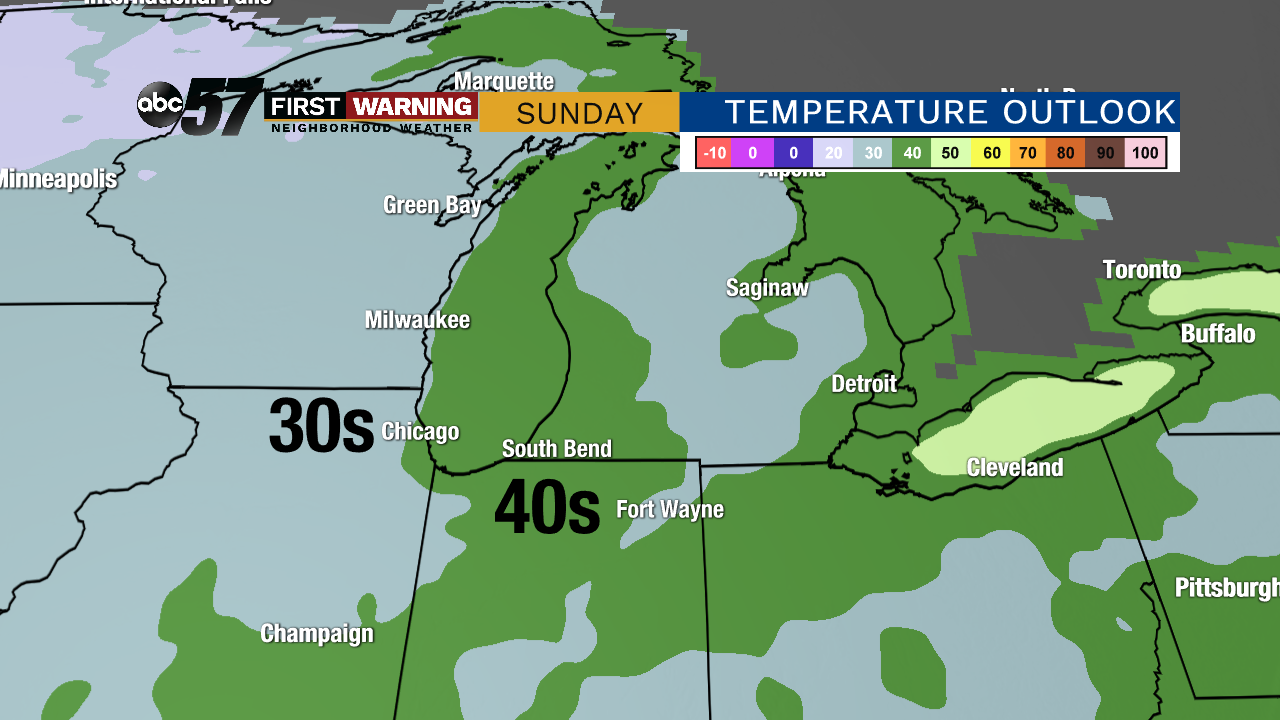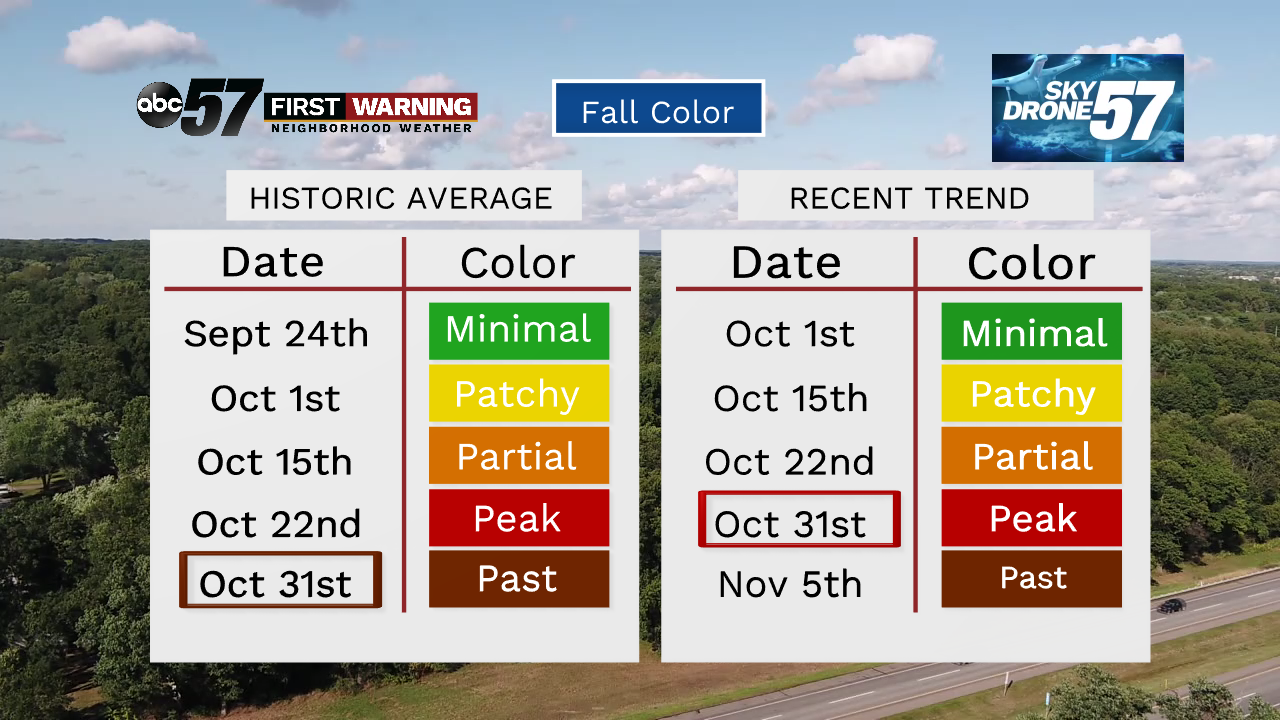SOUTH BEND,Ind. – Early October is historically when we see our first frost. That first chill is what ends the growing season and prompts the changing of the leaves. Just as we told you summer is lasting longer, the first frost is happening later and later. ?
There are three temperature marks meteorologists focus on at the beginning and end of the growing season. The first freeze or hard freeze damages and kills green plants. When water freezes it expands inside the plant, that expansion bursts cells and capillary tubes.
Frost is a little more arbitrary because temperature is just one factor. It can form even when the official low is above 32° as surfaces such as grass or your car windshield can drop below freezing. Calm wind and clear skies, along with chilly temperatures, are prime factors for frost. So we set 36° as a proxy benchmark for frost potential and keep that record.
The first frost (low of 36° or colder) has averaged out to around October 5th over the long-term climatic average (1981 to 2010) in South Bend. Recently that mark has been trending much later, by more than two weeks.
There has been a similar trend for the first freeze.
And hard freeze.
The seasons are still changing. We’re still observing cooling around the same time as the days get shorter. The difference is the mild temps are milder and the cold temps aren’t as cold and these marks are important. They are especially important with our growing season ecology, putting plants into dormancy and controlling the spread of insects and disease. A recent climate study by Purdue elaborates on this and shows this is not isolated to Michiana.
The first sign of frosty temps doesn’t show up until the end of the weekend in Michiana. Even then it’s marginal at this time, with lows ranging from the low 40s to upper 30s. If skies clear there could be a better chance of temps dipping into the middle 30s.
The later the frost, the longer the leaves will stay green and on the trees. The later leaves have been another trend we’ve reported on and show no signs of changing this year.















